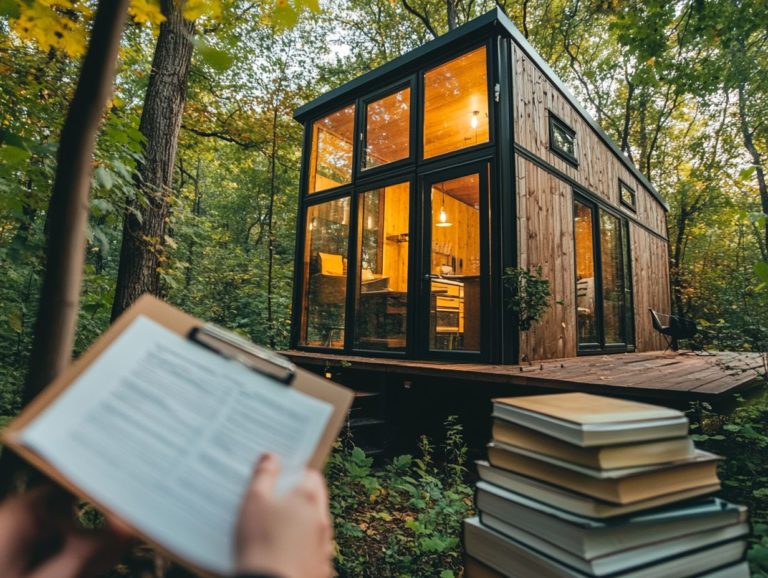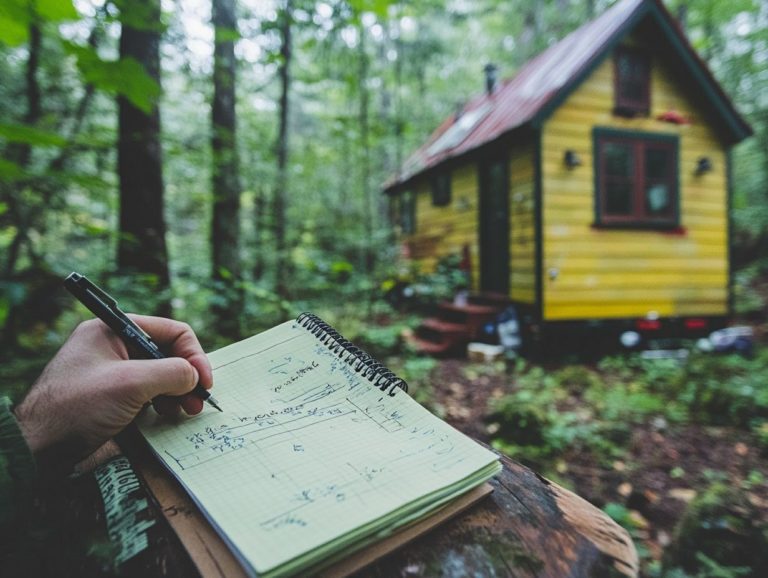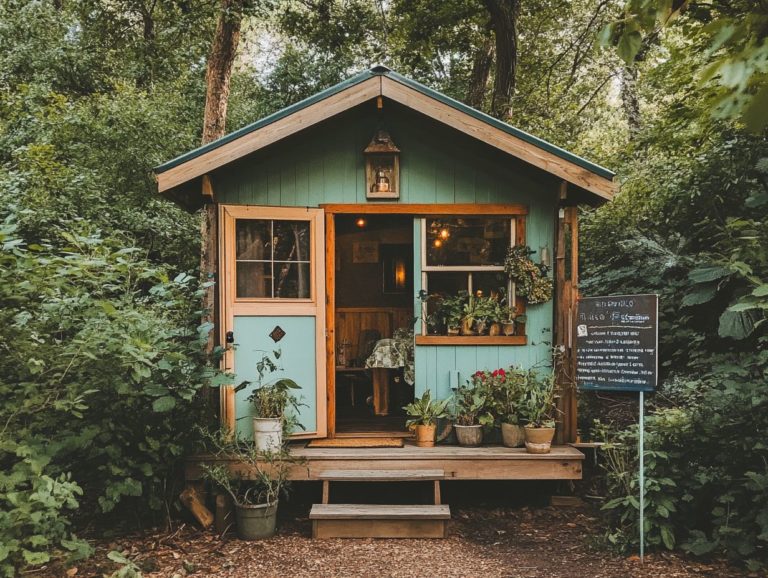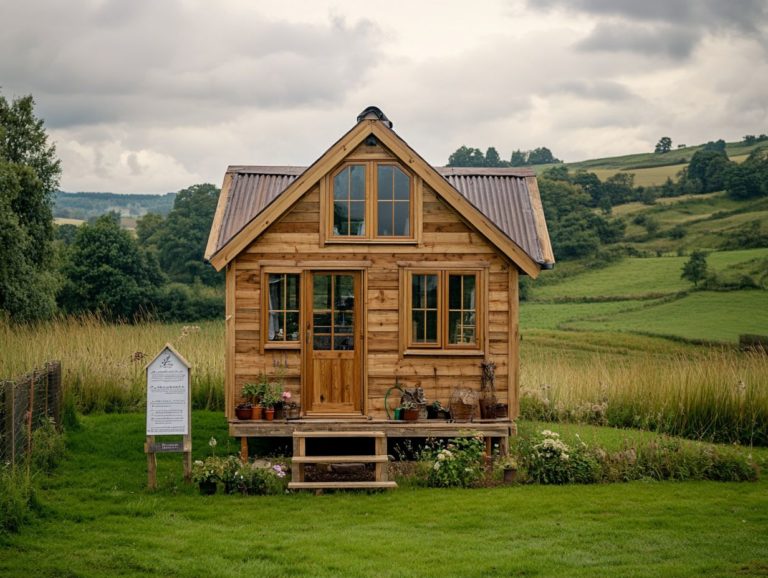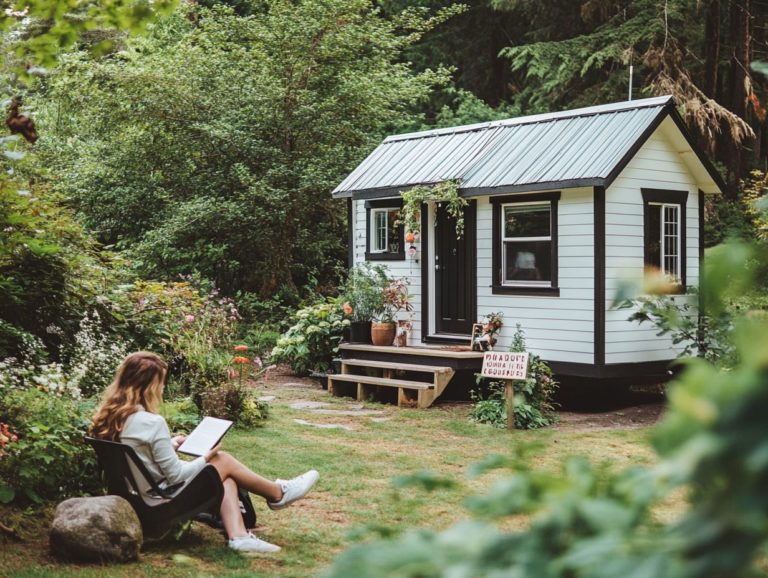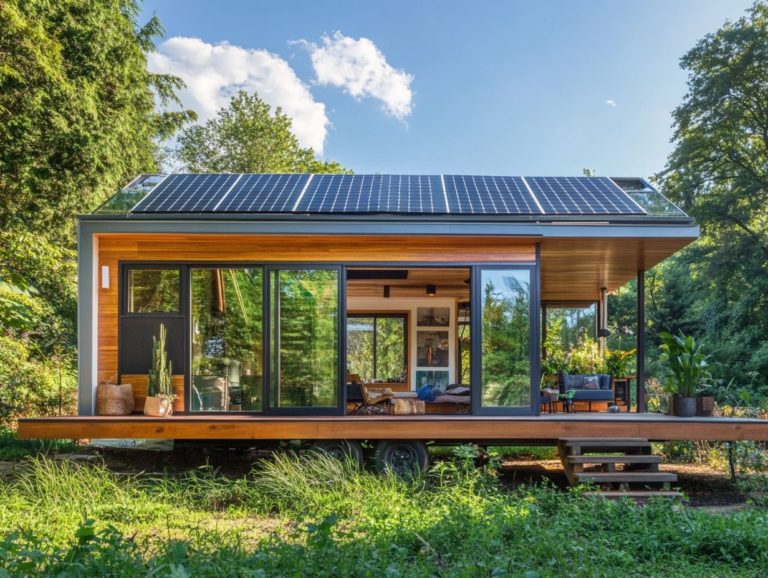Tiny House Compliance: Key Legal Factors
Are you ready to dive into the Tiny House Movement? Understanding tiny home regulations is essential for anyone considering this lifestyle.
This guide delves into the crucial elements of tiny house ownership, defining what exactly constitutes a tiny home and helping you navigate the maze of zoning regulations and building codes.
You ll explore the necessary permits, home insurance requirements that protect your home and belongings, tax implications, and strategies to effectively address any potential nuisance complaints that may arise.
Whether you re a seasoned tiny house owner or merely curious about the lifestyle, this comprehensive guide equips you with the knowledge you need to not just survive but truly thrive in your tiny home.
Contents [hide]
- Key Takeaways:
- Understanding Tiny House Compliance
- Zoning and Building Codes
- Permits and Approvals
- Insurance Requirements
- Tax Implications
- Dealing with Nuisance Complaints
- Frequently Asked Questions
- What is considered a tiny house?
- Are there any legal requirements for building a tiny house?
- Do I need a building permit for my tiny house?
- Can I park my tiny house on any piece of land?
- Do I need to have my tiny house inspected?
- Are there any other legal considerations I should be aware of when living in a tiny house?
Key Takeaways:
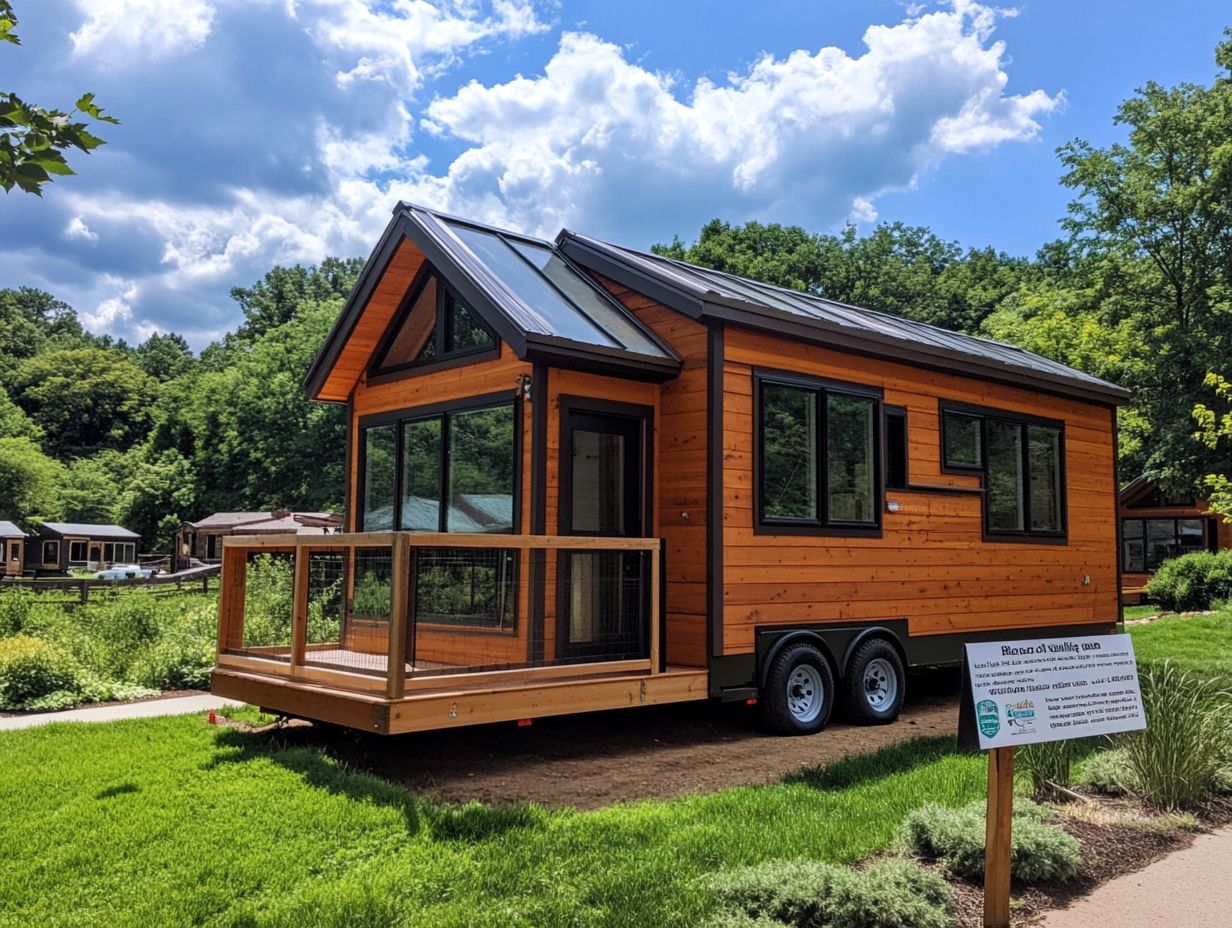
- Tiny houses must comply with zoning regulations and building codes, which vary by location and may restrict size, placement, and design.
- Permits and approvals are necessary for legally living in a tiny house. This includes building, electrical, and plumbing permits.
- Tiny house owners must consider home insurance and tax implications, as well as potential nuisance complaints from neighbors. It’s important to research and follow all legal requirements to avoid legal issues.
Understanding Tiny House Compliance
Understanding Tiny House Compliance is essential for anyone eager to embrace the burgeoning Tiny House Movement, which is flourishing in places like California, Florida, and New York. Whether your tiny house on wheels is on wheels or anchored to a tiny house on foundation, it s vital to adhere to specific regulations, building codes, and zoning laws that differ widely across local municipality jurisdictions.
As a tiny house owner or enthusiast, you’ll need to navigate these complexities to ensure your home meets minimum ceiling height requirements and aligns with the International Building Code and International Residential Code standards sets of standards ensuring safety and habitability in homes. For those considering community living, it’s also important to be aware of tiny house HOA rules. This diligence promotes a responsible approach to tiny house living and helps foster a vibrant and supportive community.
Defining Tiny Houses and Legal Considerations
Defining tiny houses requires you to grasp their unique characteristics and the legal nuances that accompany them, particularly within the context of the tiny house movement, which champions minimalist living and sustainable housing solutions.
These homes typically range from 100 to 400 square feet, embodying a philosophy that emphasizes simplicity and efficiency. There are various types of tiny houses, each catering to different lifestyles. For instance, some dwellings are built on wheels, offering you mobility and flexibility, while others are constructed on permanent foundations, highlighting stability and permanence.
As a potential owner, you’ll need to navigate a complex landscape of tiny home regulations, which can vary significantly depending on your location. For a comprehensive overview, check out tiny house regulations: a state-by-state guide. Zoning laws dictate where you can place these homes, while building codes may impose requirements on insulation, plumbing, and electrical systems, which can challenge the very essence of this innovative housing solution.
Zoning and Building Codes
Zoning and building codes serve as the cornerstone of the legal framework governing tiny houses. These regulations shape everything from land use to construction standards in various regions across the United States, including states such as Georgia, Arizona, and Alabama.
Understanding these codes is essential for anyone considering the tiny house lifestyle, as they directly impact where and how you can build your dream home.
Local Regulations and Restrictions
Local regulations and restrictions significantly influence where and how you can build your tiny house. Different municipalities across the country adopt varied approaches especially in tiny house-friendly states like Colorado and Hawaii.
Understanding these specific local regulations is essential for you as a prospective tiny house owner. To navigate these complexities, it’s important to explore understanding tiny house zoning laws, as you’ll likely encounter challenges such as setback requirements, which refer to how far your structure must be from property lines, and occupancy limits, which restrict the number of people living in a tiny home.
In more progressive areas, like certain communities in California, zoning rules about where you can build are becoming increasingly accommodating. They allow you to park tiny homes on wheels legally in backyards or on approved lots.
However, in other municipalities with strict regulations, your aspirations might be stifled by tiny house laws. That’s why it s crucial for you to engage with local planning boards to explore potential solutions. You can seek variances or advocate for changes in zoning ordinances.
By navigating this landscape effectively, you can actively secure your dream of tiny house living for yourself and many others.
Permits and Approvals
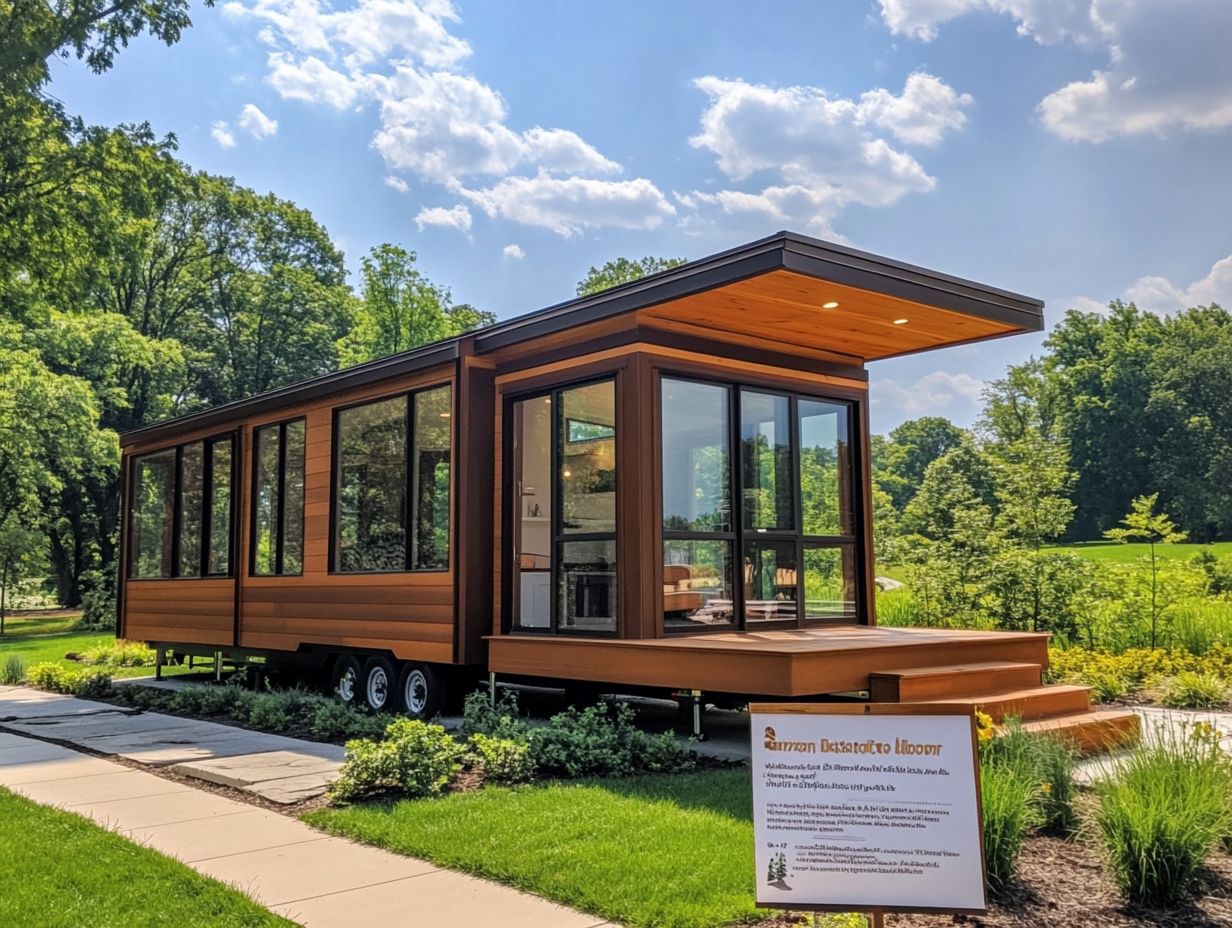
Navigating the realm of permits and approvals is crucial for you as a tiny house owner. These legal requirements ensure that your tiny home adheres to local zoning regulations and building codes, which can vary considerably from one state or municipality to another.
Understanding and fulfilling these obligations not only protects your investment but also enhances your living experience in your unique space.
Obtaining Necessary Permits
Obtaining the necessary permits for your tiny house requires a clear understanding of zoning regulations and compliance with local municipality guidelines. This can often feel like navigating a labyrinthine process.
To embark on this journey, you must first identify your region s specific requirements. Begin by researching local codes, as tiny home regulations can vary dramatically between jurisdictions even within the same state.
Once you’ve gathered that foundational knowledge, engage directly with your local zoning department. This proactive approach can help clarify any nuanced regulations and provide valuable insights into the application process.
Don t shy away from asking precise questions; it s crucial to document your interactions for future reference, especially regarding tiny house laws.
Connecting with local tiny house communities or forums can provide you with invaluable tips and resources, making your permitting journey more efficient and informed.
Insurance Requirements
Insurance requirements for tiny houses often diverge significantly from those for traditional homes. You ll find that tailored home insurance policies are essential to address the unique facets of tiny living.
Consider factors like the mobility of tiny houses on wheels and the need to comply with local municipality regulations. Understanding these distinctions will ensure that your insurance coverage aligns perfectly with your lifestyle, especially when considering tiny house living and zoning.
Insuring Your Tiny House
Insuring your tiny house requires a thorough evaluation of your dwelling’s specific needs. This includes a solid understanding of applicable tiny house laws and a search for insurance policies that effectively cover the unique risks of tiny living.
Start by assessing the value of your tiny home, considering the materials and custom features that set it apart from a traditional house.
Once you’ve established its value, it s prudent to compare insurance providers, as coverage and pricing can vary significantly.
Inquire about their experience with tiny house policies, as this expertise can greatly influence your protection. Take the time to meticulously read through the policy terms and conditions, paying special attention to details that pertain to tiny house regulations, such as zoning laws and coverage for personal belongings.
This diligence will ensure that your distinctive living situation is properly safeguarded.
Tax Implications
Tax implications for tiny house owners can differ significantly depending on local municipality regulations, the specific type of tiny house whether it’s on wheels or built on a foundation and the prevailing tiny home regulations. Each of these factors can influence property taxes and potential deductions. Staying informed about these nuances is crucial for your financial landscape.
Tax Considerations for Tiny House Owners
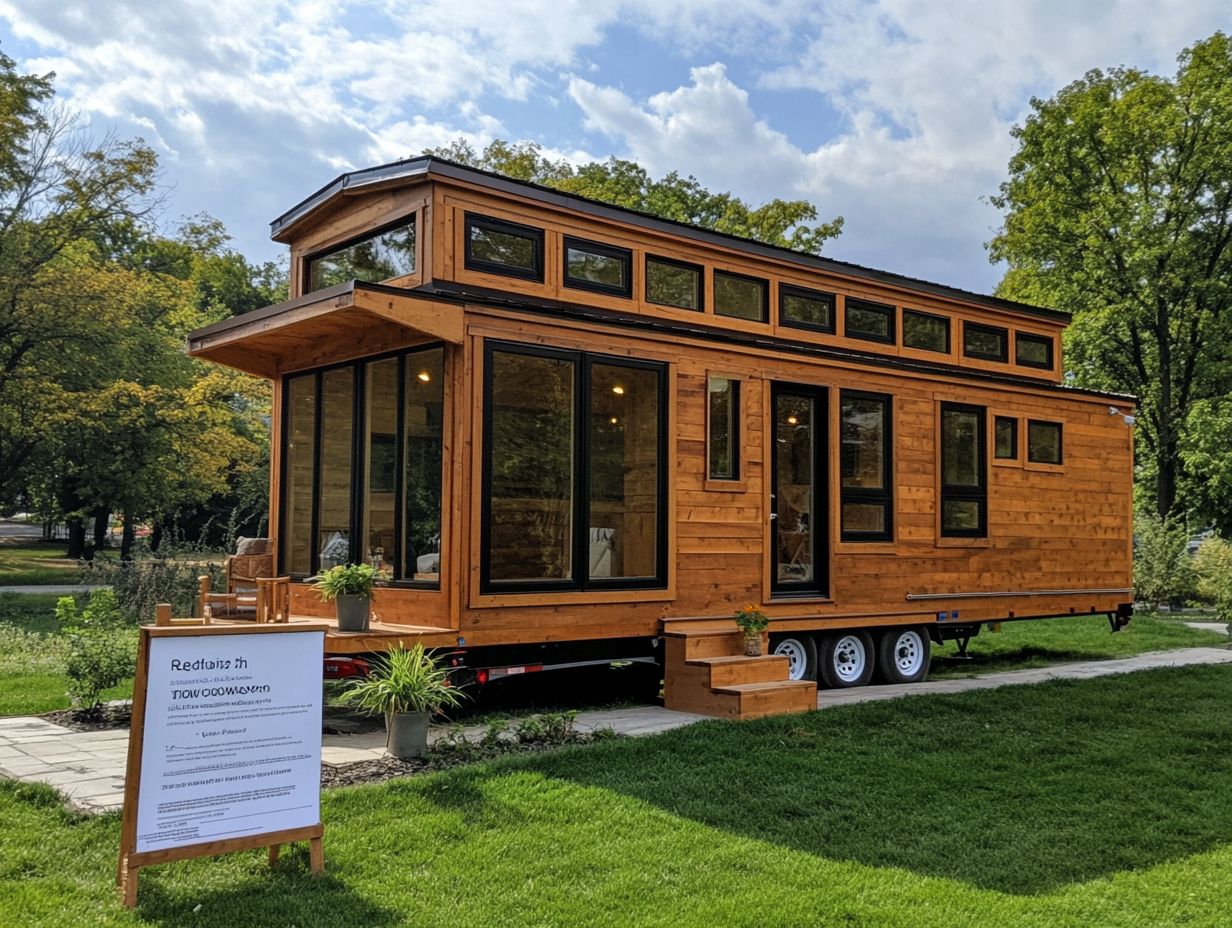
Tax considerations for tiny house owners can be intricate. A deep understanding of how local municipality laws and tiny home regulations influence property taxes and eligibility for various deductions is essential.
Navigating these complexities is vital, especially when taking advantage of tax credits for sustainable building practices. Remember that local zoning laws significantly impact not just your initial tax assessments but also your long-term financial commitments.
Exploring financial strategies, such as depreciation deductions which reduce your taxable property value over time and potential exemptions can optimize your tax liabilities. Stay updated on changes in laws to maximize your benefits and investment!
Dealing with Nuisance Complaints
Navigating nuisance complaints is a common hurdle for tiny house owners, particularly in communities where zoning regulations may not embrace the unique lifestyle and living arrangements that tiny houses offer.
Addressing Noise and Other Concerns
Addressing noise and other concerns in tiny house communities is essential for nurturing a harmonious living environment. This requires proactive communication and adherence to local guidelines.
To create a peaceful atmosphere, consider implementing some soundproofing techniques. Adding weather stripping to your doors or investing in carpets to absorb sound can make a significant difference. Establish community agreements that clearly outline acceptable noise levels and times to foster mutual respect among residents.
Effective communication is key; reach out to your neighbors for open discussions to invite understanding and pave the way for compromise. Maintain a respectful relationship with local authorities for better support in resolving any issues amicably, ensuring your community remains a delightful haven for everyone.
Frequently Asked Questions
What is considered a tiny house?
A tiny house is a residential structure typically less than 400 square feet in size, designed to be a permanent dwelling.
Are there any legal requirements for building a tiny house?
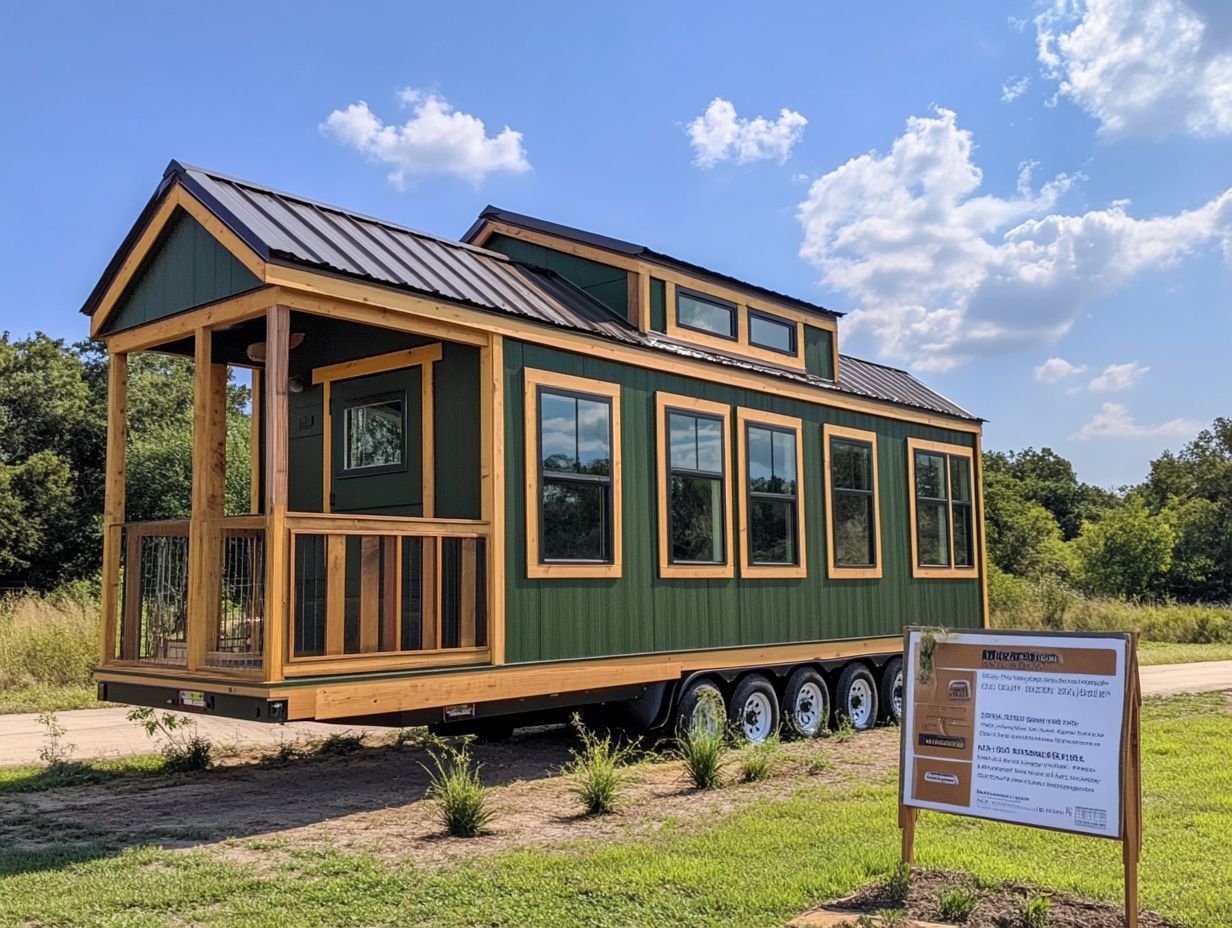
Yes, there are legal requirements that must be met to build a tiny house. These may include zoning, building codes, and other regulations set by local and state governments.
Do I need a building permit for my tiny house?
Yes, you usually need one! Building permits are required for any new construction, including tiny houses, to ensure they meet safety and building code standards.
Can I park my tiny house on any piece of land?
No, you cannot park your tiny house on just any piece of land. You need to ensure the land is zoned for residential use and meets all other local regulations.
Do I need to have my tiny house inspected?
Yes, most jurisdictions require tiny houses to be inspected during the building process and before occupancy to ensure compliance with all legal requirements.
Are there any other legal considerations I should be aware of when living in a tiny house?
Yes, additional legal factors to consider include insurance, utilities, and taxes. It’s important to conduct thorough research and consult with legal professionals to ensure compliance with all applicable laws.

